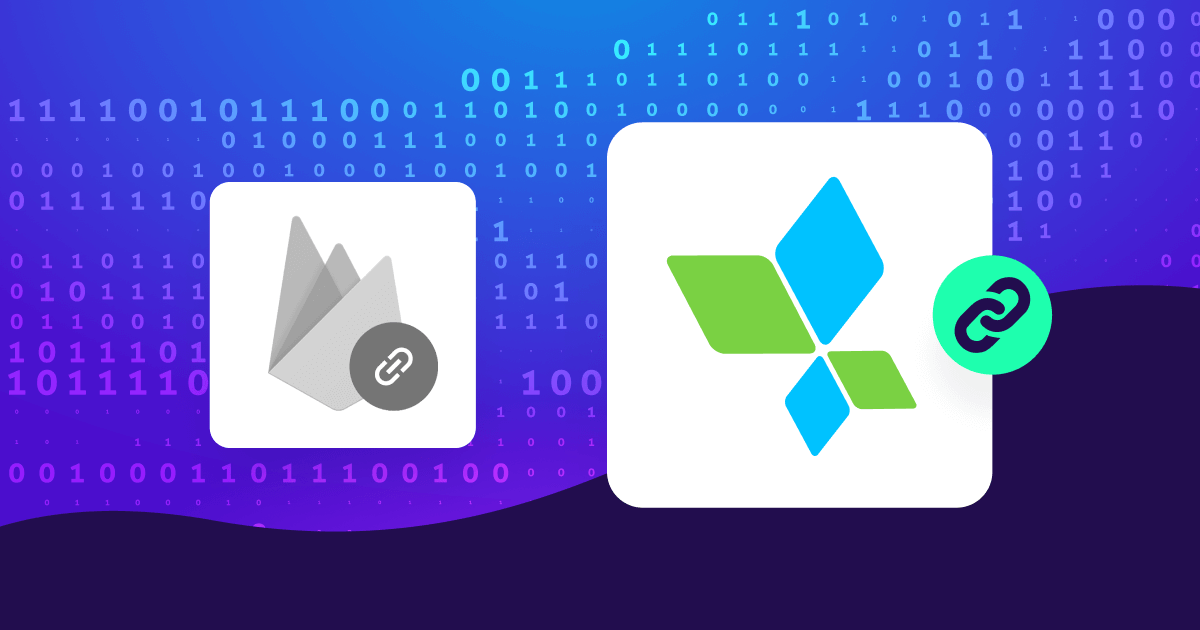
The great migration – Debunking the fear factor when looking to switch MMPs

Let’s face it, folks. Migration is in most cases a complex, occasionally messy, and potentially risky process — and it usually comes with a big serving of stress and uncertainty.
You know your current MMP isn’t right for you, but the thought of switching stresses you out even more. Potential clients tell us data loss is their biggest fear in a migration, but integration issues, data protection, hidden costs, and a lack of support all give them nightmares too.
At the same time — as a growth leader tasked with driving sustainable revenue and optimizing marketing spend — you know that a successful migration to the right mobile measurement partner (MMP) can unlock significant business value for your app. By enabling accurate attribution, comprehensive data insights, and seamless integration with your tech stack, the right MMP empowers data-driven decision-making, improved campaign optimization, and ultimately, increased return on investment (ROI) and revenue growth.
If you already know it’s time to switch MMPs, but are worried about the rocky path ahead, fear not.
Migrating to a new MMP isn’t as painful as you might think, as long as you go about it with meticulous planning, close-knit teamwork, and the right partner by your side. That means someone who not only has the right products, but provides a flexible, personalized service that prioritizes protecting your data and supporting you and your team to work with them effectively.
To help you address all of your MMP migration concerns, we sat down with some of our most experienced CSMs and solution architects to learn what keeps marketing leaders awake at night — and how we can help ease the stress — curating the five most common migration fears (debunking each one) and the most important questions to ask your MMP before diving headfirst into the nitty-gritty stuff.
And because ensuring a successful migration starts with watertight preparations, we did all this without trying to oversimplify processes, or paint a rose-colored picture.
Let’s dive in.
Migration fear #1 – Data loss & data gaps
A major risk in any migration project is losing valuable data along the way. In our research, marketers cite data loss as their biggest concern when they think about switching MMPs.
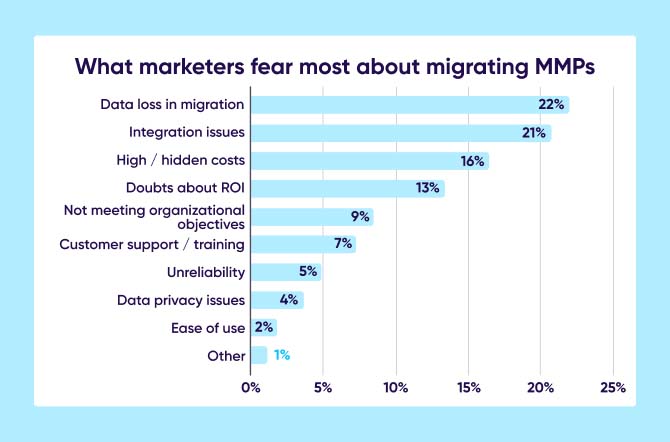
And let’s not forget about the dreaded data gaps when pausing campaigns, and the potentially muddled process of migrating live links from across your owned media channels (especially if you’re a big eCommerce brand that partners with lots of affiliate networks).
Scary stuff, right?
Not necessarily.
First off, bear in mind that switching between MMPs doesn’t force you to stop using one in order to transition to the other. In fact, an overlap period is more than acceptable and could help you eliminate data loss, data gaps, and the potential revenue loss that could ensue. Of course, running with two platforms in parallel tracks means you’re paying twice, so you’ll only want to do this for a limited time.
Second, your new MMP should offer you all the documentation, resources, and real-time guidance your team needs to migrate your live links, campaigns, and LTV data. That will not only help you avoid duplicate charges (an unfortunate yet common reality when working with multiple media sources), but also the potential loss of attribution data.
Migration fear #2 – Inefficiencies due to lack of support
Ultimately, you’re switching MMP to improve growth and revenue. But if the transition doesn’t go smoothly, resulting in downtime, you could actually end up losing money (in the short term at least). Even a brief pause in user acquisition campaigns can result in a decrease in new user acquisition and lost revenue for high-growth mobile apps.
To minimize these risks and ensure business continuity, collaboration is key.
It might sound obvious, but the most successful and efficient migrations are always the ones where the teams responsible have been working closely together from the planning stage through to execution.
To help you orchestrate this concerto with precision and minimal waste of precious resources, your MMP should A) have top notch self-serve documentation and B) assign you a dedicated CS & support team, which will help you navigate the migration bridge with confidence and efficiency. This enables growth teams to capitalize on emerging opportunities without significant disruption.
In addition to tight collaboration, preparation is nothing short of crucial when it comes to ensuring a cost-effective migration.
Here’s what our most savvy customers recommend when it comes to planning out an airtight migration:
- Set up technical discussions with your partners to carefully map out the migration process for each one.
- Map out your marketing activities – From influencers’ content to referral programs, customer-premises equipment (CPE) networks to SRNs. Each source has to have its own dedicated migration plan.
- Map out your privacy measurement – Migrating SKAdNetwork and SRNs’ aggregated data will also require a dedicated plan.
- Don’t skip device ID migration – Uploading your existing user device IDs (IDFA, IDFV, GAID, CUID) into the new MMP’s platform will help you solve data issues such as SRN double charges. Don’t overlook this step.
- Factor timing into your plan – It’s best practice to complete all migration stages before releasing your updated app with the new MMP’s SDK, and to pause existing campaigns before getting started with the device ID migration phase.
- Ask questions – And be sure to cement all answers before getting started. For example, should you force-update your app once migration is completed? Should you apply a side-by-side methodology where both SDKs will run in parallel for the transition period? How long should that transition period be? Should you migrate all campaigns at once or a few at a time?
The more questions you tackle in advance — the smoother, quicker, and more cost-efficient your migration process will be.
Involving the right people, being clear on roles and responsibilities, and keeping everyone in the loop will be key. With so much planning involved, you could consider appointing a dedicated project manager to keep on top of everything.
Thinking about switching your measurement partner?
Learn moreMigration fear #3 – Integration causing extra work (and taking too long!)
Your new MMP is supposed to make your life easier. But what if something breaks during the integration process and you have to spend hours putting the pieces back together? Clearly, that’s not the best use of anyone’s time.
Common areas of concern here include in-app events and dashboards.
Having to re-map in-app events
This is a big worry for marketers of gaming apps, who like to measure just about everything. Some gaming app migrations entail transitioning hundreds of in-app events, which could understandably be considered a daunting task.
One of the best pieces of advice we can offer you when it comes to migrating in-app events is to resist the temptation to map every single one at once. Instead, take a core subset of in-app events that matter most to your business, and focus your attention on nailing these from the get-go.
Another piece of advice would be to ensure your new MMP offers a tool that automates the new naming conventions process. If they don’t, this process will need to be done manually and will likely take more time — which will need to be factored in when planning your migration timetable.
Having to rebuild dashboards
You and your team rely heavily on dashboards and reports to measure the performance of your marketing efforts, so you can ensure goals are met, pinpoint underperforming campaigns, and identify opportunities for growth.
The mere thought of getting used to a new dashboard UI could create a sense of anxiety. That’s why, when you’re adapting to a new MMP platform, it’s critical your team can get quick access to the most relevant data so you can draw effective insights on the fly.
Here are a few best practices to help streamline the dashboards rebuilding phase:
- Test, test, test – Make sure that the different views of your data — like activity, LTV, and cohort — are behaving as expected. In other words, not showing random peaks or drops in values. Keep testing the API connections throughout the process to avoid skewed data and to ensure your dashboards are up and running quickly.
- Clean out the trash – It’s likely that some of your dashboards were created for a one-off purpose and haven’t been removed. You don’t want to waste precious time replicating dashboards that will never be used.
So, consider the migration process as a rare opportunity to do some much-needed house cleaning, and double-check with stakeholders what reporting they really need.
Dashboards alignment – An overlap with your current MMP allows you to compare dashboards so you can identify any obvious issues and fix them on the spot.
Migration fear #4 – Learning new workflows
Let’s be honest. Very few people actually enjoy learning new processes. We’re all creatures of habit, we like knowing exactly where everything is, and we don’t want to have to pause and think every time we need to get something.
This is why being forced into learning new workflows, and getting familiar with a new UI/UX in both visual and practical terms, can be a source of stress for teams.
The key to addressing this very common concern is to simply give it TIME. There’s no getting around it really. Dive in, get trained, engage with your new platform as much as possible, and soon enough you will unlearn the old ways.
Don’t just spring a new system on your team: include them throughout the process so they understand what’s changing and what the benefits will be. Make sure everyone who needs it gets access to demos and training, and learn alongside them. Let them get comfortable with the tools, and be patient if your coworkers take time to adjust.
That said, to ensure you’re fully supported throughout your learning phase, it’s your new MMP’s job to not only share a wealth of learning assets (checklists, full step-by-step documentation, video tutorials, and recorded webinars), but also partner you with knowledgeable, experienced CSMs and solution architects.
These guys will ensure the whole migration and onboarding phases are as stress-free as possible.
Migration fear #5 – Not seeing the value you expected

We get it: you worked hard to convince stakeholders of the value to be gained by switching MMP, and now the pressure’s on to deliver. How can you be sure the promised growth will materialize? And how long might it take to see results?
If these questions are playing on your mind, you’re not alone: not only did 33% of potential clients we surveyed mentioned value-related issues as their top concern in considering switching MMPs, but of those that had switched, “Didn’t meet ROI” was the top reason prompting a move.
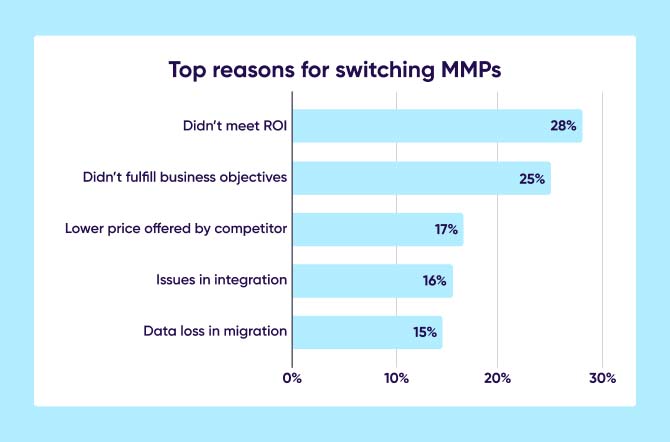
The first step to calm your fears is to do your homework and make sure you understand exactly what your new MMP is offering. Take every opportunity to access demos, tutorials, and free trials before you commit, so you can see for yourself how the new suite of products outperform your existing ones. That way, you’ll know what to expect, and when to ask questions.
As outlined above, the right preparation and support are also key to maximizing value from your new MMP. The sooner you can get everyone up and running on the new systems, the sooner you’ll start seeing a return on your investment. And by mapping out every detail of the migration, you can minimize dips in revenue and prevent costly re-work.
The other big drain on value is hidden costs. As with any procurement project, transparency is vital — a trustworthy MMP will set out all of their costs upfront and alert you to any additional charges, so you don’t have to watch your hard-earned gains fly out the window.
Aligning stakeholders and leading teams through change
As a growth leader, successfully navigating an MMP migration requires more than just technical execution — it demands effective communication, stakeholder alignment, and change management within your organization.
During this transition, it’s crucial to:
- Clearly articulate the strategic rationale and expected business benefits of the migration to executive stakeholders, ensuring their buy-in and support.
Pro tip: ask your CSM to help you do this with case studies and ROI analyses. - Develop a comprehensive communication plan to keep cross-functional teams informed and engaged throughout the process, addressing concerns and managing expectations proactively.
- Provide ample training and support resources to ensure your team can quickly adapt to new workflows and leverage the full capabilities of the new MMP solution. The sooner they can see the value the new tools bring, the keener they’ll be to use them.
Pro tip: AppsFlyer’s knowledge base and dev portal have a host of information you can easily share with internal teams. - Clearly map out your internal buyer committee, especially integrators and budget holders. Make sure they understand the value of the tool you want to integrate, and enlist the help of other internal champions if needed.
By prioritizing change management and actively leading your team through this transition, you can mitigate disruption, maintain productivity, and position your organization to fully capitalize on the benefits of your new MMP partner.
Five questions to ask your MMP before getting started
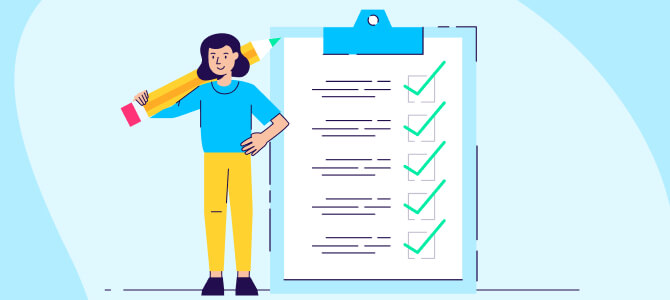
Hopefully, all this has reassured you that you’re not alone in your migration concerns — other businesses have overcome similar challenges, and your MMP is well placed to support you. But before you launch into the big switch, here are a few key questions you should ask your new MMP to make sure everything runs smoothly.
1 – What are the stages of your migration process?
Your new MMP should break this down into clear phases, offer an estimate for completion for each one, and clarify which teams should be involved at which point.
Ideally, you’ll be presented with something similar to this:
Phase 1 – Kickoff – Meet your experts
- This is when you’ll get to meet the CSMs and solution architects that will guide you closely throughout the process, assess your measurement needs, and help all teams align on next steps.
This is also when you can ask to get connected with another customer that faced the same needs or challenges that you’re facing now, so you can ask questions and even get inspired by a new perspective. - Leading team: All involved teams.
Phase 2 – SDK migration – Let the journey begin
- This stage will include implementing your new MMP’s SDK for iOS and Android or a Server-to-Server integration.
- Leading team: Your app developer.
Phase 3 – Device migration – Whitelist your device IDs for accurate NOI
- This phase will solve data issues associated with existing app users who downloaded your app and were attributed by your previous MMP. During this stage, device IDs of acquired users will be whitelisted to avoid double spending.
- Leading team: Your data engineer / Analyst.
Phase 4 – Campaign migration
- This is when you’ll activate your ad networks, migrate your campaigns a few at a time or in bulk, and if needed, also automatically convert tracker URLs into deep links.
- Leading team: Your UA manager.
Phase 5 – Data infrastructure – Stream data to the endpoint of your choice
- Before migration, your systems store your attribution data according to your old MMP’s reporting structures, fields, and parameters, which will need to be re-mapped in order to enable your new MMP to report data correctly.
Leading team: Your data engineer / Analyst.
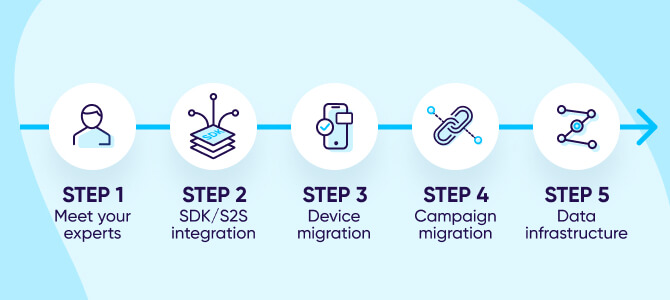
2 – How long will migration take from start to finish?
An answer to this question will hugely depend on your current data layout, migration needs, and cross-team preparation. Nonetheless, it’s a very important question to ask so you can gear up and allocate internal resources accordingly.
Some customers take five days to complete a full migration, while others can take up to a few weeks.
Whatever your current situation is in terms of available resources or timing constraints, be sure to set expectations with your MMP as early as possible — to help make the process as efficient and as painless as possible.
Communication is imperative.
To give you a very (very) general estimate, this is roughly what you should expect timeline wise, but bear in mind these estimates can be shortened or extended dramatically (more on that in the next question):
- Kickoff – 1 hour
- SDK migration – 1-2 weeks
- Device migration – 1-2 weeks
- Campaign migration – 1-3 weeks
- Data infrastructure – 3-4 weeks
3 – What kind of support will you offer to help me ensure a successful migration?
Just in case we haven’t stressed this enough, cross-team collaboration and alignment that’s being closely monitored by your MMP’s dedicated team is the key to a successful migration.
And while internal team alignment and streamlined communication is on you, clear and intuitive migration support is on your MMP.
Be sure to ask about the extent of ongoing support and scope of learning assets your MMP offers, which should include checklists, step-by-step documentation, and interactive tutorials.
That said, knowing that each migration is unique and that an “off the shelf” approach won’t do, your assigned team on the MMP side has to ensure an airtight battle plan.
They need to be experienced enough to ensure nothing is missing from your plan, that your timeline makes sense given your migration needs, and that your team is given all the guidance and support needed throughout the process itself.
4 – Who needs to be involved team-wise?
In most cases, we’re looking at a multistage process that involves your app developer, data engineer or analyst, and UA manager. On the MMP side, a dedicated CSM and solution architect will help you orchestrate the process from A to Z using live sessions and detailed documentation.
5 – What are your best practices for campaign migration?
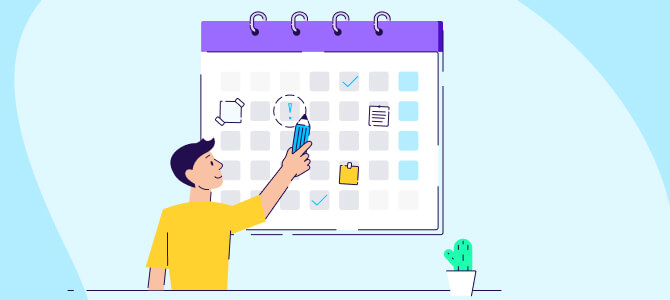
Should you make a cleancut switch or run with two MMP platforms in parallel for a certain period of time?
The short answer is: that’s up to you to decide, and there are pros and cons to each approach that you need to factor in.
The first approach involves preparing everything in advance, pausing campaigns for a couple of hours, and then gradually restarting them to ensure everything is running smoothly before rolling out the rest.
That said, even if you do end up opting for this option, bear in mind you’ll still need to hit pause on some campaigns, like Facebook on iOS, or it might skew your SKAN conversion value schema.
So from a data integrity standpoint, although pulling the brakes on campaigns for a couple of hours tends to send shivers down the spine of most marketers, it could end up being a better option for you.
The second approach is when you run the two platforms in parallel.
What you need to take into account here is that although you won’t need to pause campaigns, operating the two MMPs at the same time for a few days might affect optimization algorithms on the SRNs side. It also means you’re paying two providers.
The upside to this double track approach is being able to stop using the old MMP as soon as you’ve configured all of your new MMP’s integrated partners and ensured everything looks ok. Just be sure to keep the overlap period to a minimum.
If you’re thinking about migrating, here are a few handy resources
Whether you’re contemplating an MMP switch or are already in the thick of vendor comparison, here are three resources to help you take that next step with certainty:
- How to know it’s time to switch MMPs – Three telltale signs your current MMP might not be the right solution for your business needs.
- The MMP buying guide – Getting the foundation of your tech stack right, plus all the ammunition you need to sell the right MMP solution to key stakeholders in your organization.
- The MMP assessment template – Already shortlisted your top three MMPs? Great. Use this assessment spreadsheet to help you identify your top choice by scoring your highest priorities and comparing apples to apples.
Summing it up

- Marketers often fear that migrating their MMP will be complex, messy, and fraught with risk. But it doesn’t have to be, if your new MMP provides the right personalized support to plan and execute a smooth transition.
- The most common concerns for brands considering an MMP migration are data loss or gaps, inefficiencies due to lack of support, extra work caused by integration issues, learning new workflows, and not seeing the value they expected.
- But you can mitigate these risks with detailed planning, tight cross-team collaboration, and support that’s tailored to your business. To avoid any nasty surprises, thoroughly research your MMP’s products and costs upfront, and ask them to set out the migration journey in detail.
- Preparing a well-planned migration scheme with your new MMP, and setting the right expectations around your time restrictions and available resources, will help your new MMP offer all the support you need for a smooth and hassle-free migration.
Hopefully, this guide has helped to calm your fears about an MMP migration and given you confidence that you can make the switch. To learn how AppsFlyer could power your app growth — and support you with the transition — book a call with us today.


